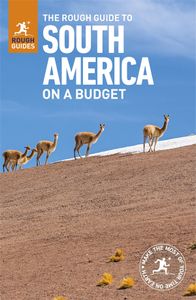Native Cruceños, however, still dominate the city. Known as cambas, they are culturally a world apart from the rest of Bolivia (they in turn refer with mild contempt to the highland immigrants as collas – the two terms being old Inca words for lowland and highland peoples respectively). Generally loud, brash and happy-go-lucky, their language, music and outlook are infused with a tropical ease and sensuality, which feels closer in spirit to Brazil or Colombia. Santa Cruz has few conventional tourist attractions, and some find its brash commercialism and pseudo-Americanism unappealing. However, others enjoy its dynamism and tropical insouciance.
The city continues to grow at a phenomenal rate, spreading inexorably in a mixture of ragged shantytowns, commercial developments and exclusive residential districts where oil executives, businessmen and made-good drug-traffickers relax in opulent mansions and drive around in imported 4WDs (known as “narcocruisers”). The old colonial city centre, however, is still dominated by whitewashed houses with tiled roofs that extend over the pavements, and when everything closes up in the middle of the day for an extended lunch break the city is suffused with a languid tropical indolence.
Brief history
Santa Cruz de la Sierra was founded in April 1561 by the conquistador Nuflo de Chavez, who had arrived in the region at the head of a large military expedition accompanied by thousands of indigenous Guaraní. The original city stood 260km east of its present location, close to San José de Chiquitos. The new settlement proved precarious, however, surrounded by a hostile indigenous population and far from any other outpost of Spanish power. In 1594 it was moved to its present location, a more easily defended site on the west of the Río Grande, close to the last foothills of the Andes. For the next three and a half centuries Santa Cruz remained an isolated frontier outpost. Things began to change in the 1950s with the construction of a railway link to Brazil and a road to Cochabamba. Subsequently Santa Cruz became the main supplier of cotton, rice, sugar, soy and other tropical agricultural produce to the rest of Bolivia (and, increasingly, foreign markets as well).
The cocaine, oil and gas economy
Santa Cruz’s economic boom really took off in the 1970s, when the city emerged as the centre of the Bolivian cocaine industry. Cocaine brought enormous wealth – as well as corruption – to the city, much of which was reinvested in land, agriculture, construction and other legitimate businesses. Growth was further fuelled by oil and gas revenues from the Chaco, and generous government subsidies to large landowners and agro-industrialists. The population of Santa Cruz leapt from around 42,000 in 1950 to well over one and a half million today. Since coming to power, however, President Evo Morales has come through with pledges to increase state control or even nationalize foreign-owned oil fields, refineries and utility companies to ensure that more revenue and jobs benefit Bolivia’s poor. As Latin America’s second-richest country in natural resources, this has caused shockwaves throughout the region – especially in Santa Cruz.



















